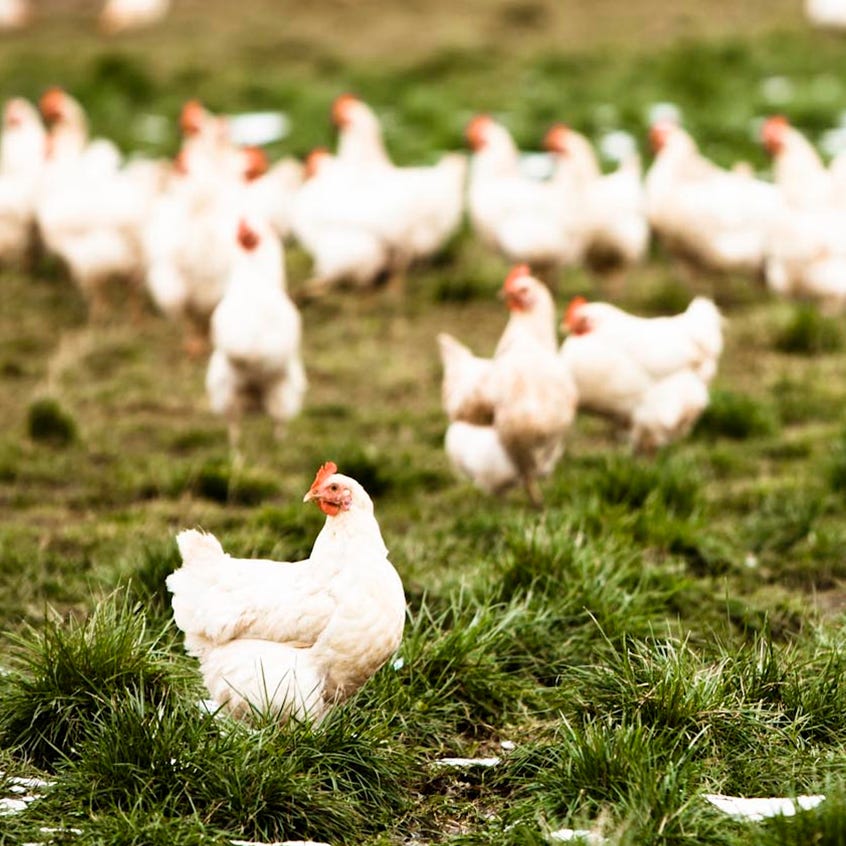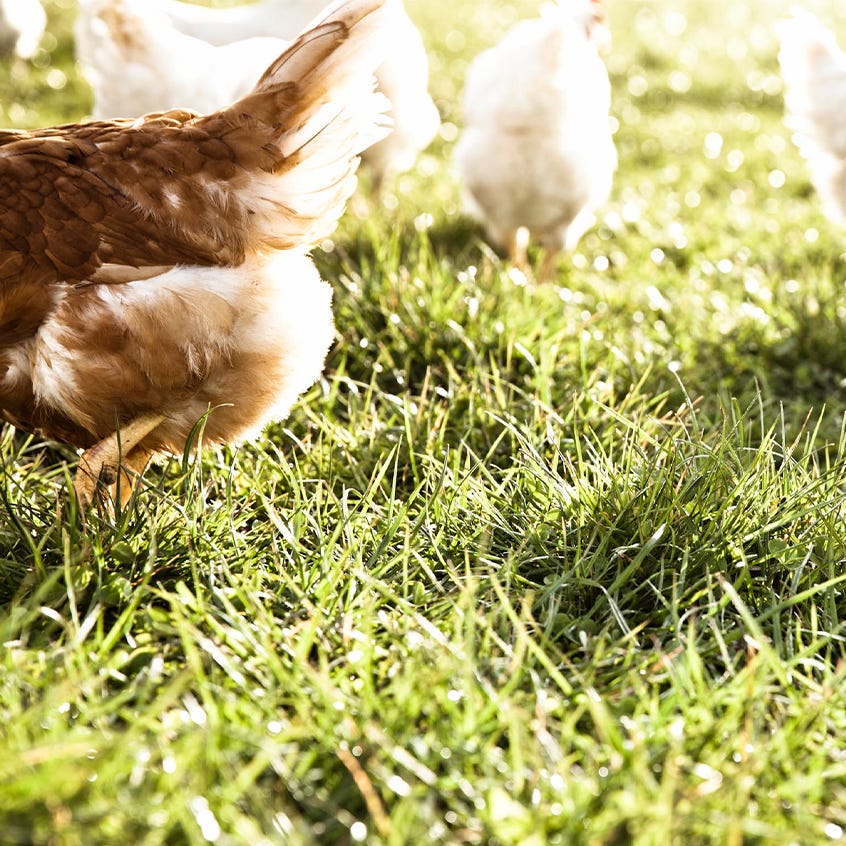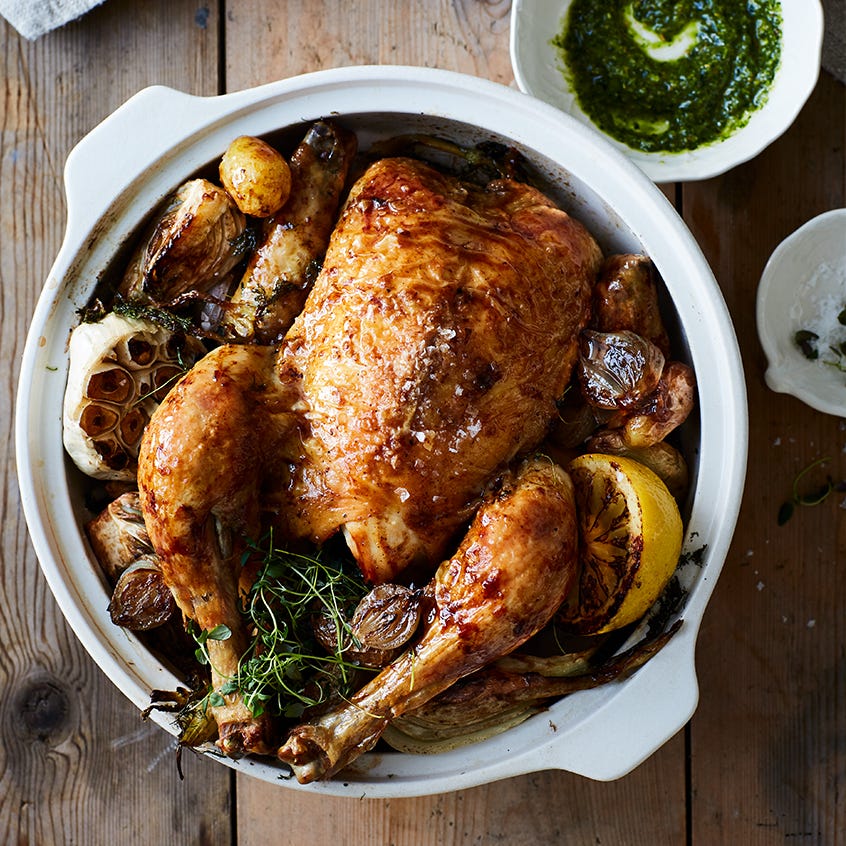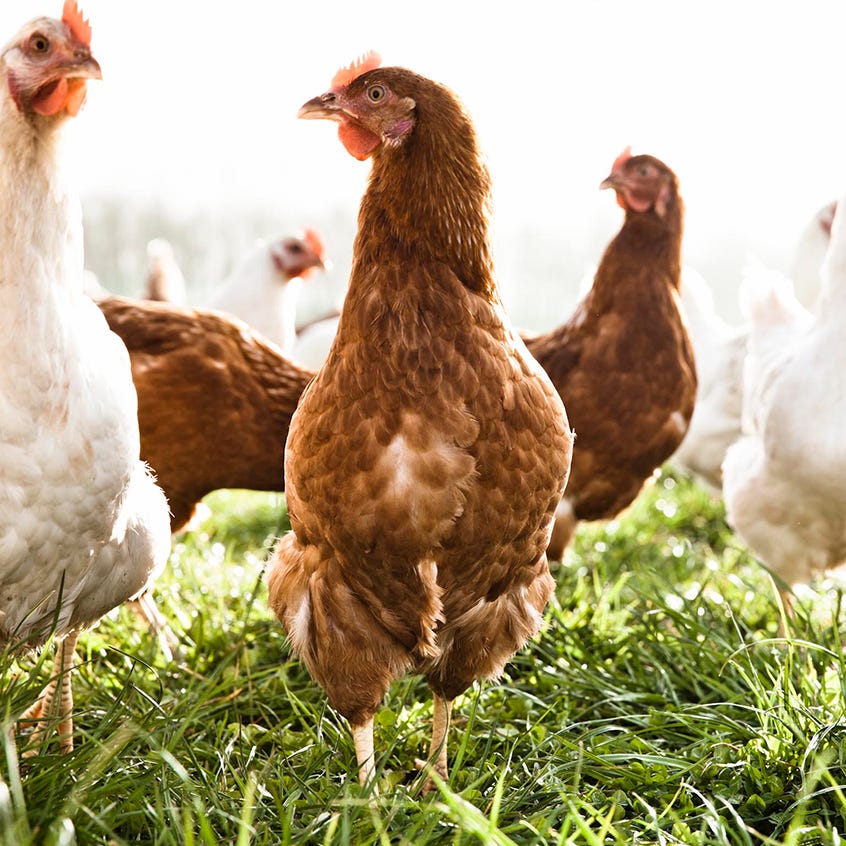Have you ever stood in the grocery store, staring at egg cartons or chicken packages labeled “free-range” and wondered what that actually means? I sure have! As someone who’s been researching sustainable food choices, I’ve discovered that those two little words—”free range”—don’t always mean what we think they do. Let’s dive into the world of free-range chickens, separate fact from fiction, and figure out what’s really best for the chickens and for us.
The Official Definition: Not What You Might Expect
According to the USDA the term “free-range” on your chicken simply means the bird “must have had access to the outside.” That’s it. Pretty vague, right?
Here’s what’s surprising – the regulations don’t specify
- How large the outdoor area needs to be
- How long chickens must have access to it each day
- What type of outdoor space is required (could be dirt or gravel, not necessarily grass)
Even more concerning according to a report by the Animal Welfare Institute the USDA doesn’t actually conduct audits on facilities to verify outdoor access claims. In fact, very little evidence is required to support these claims!
This means your “free-range” chicken might have only seen daylight for a few minutes each day in a tiny outdoor space. Not exactly the idyllic pasture scene we imagine, is it?
Free-Range vs. Other Chicken Labels: Know the Difference!
When shopping for chicken, you’ll encounter several different labels that might seem similar but actually indicate very different living conditions.
| Label | What It Actually Means |
|---|---|
| Free-Range | Must have had “access” to outdoors, but no specifications on space size or time outside |
| Certified Humane Free Range | At least 2 square feet of outdoor space per bird with vegetation; at least 6 hours outdoors daily (weather permitting) |
| Certified Humane Pasture-Raised | At least 108 square feet of land per chicken; most time spent outdoors with shelter available |
| Organic | Year-round outdoor access, exercise areas, shelter; no antibiotics; organic feed only |
| Cage-Free | No cages, but can still be crammed 20,000-40,000 birds in a barn with no outdoor access |
I was shocked when I learned that “cage-free” chickens might never see the sun! And “free-range” requirements are barely better. These labels can be seriously misleading for consumers who care about animal welfare.
Benefits of True Free-Range Chickens
When chickens genuinely have meaningful outdoor access (like those with Certified Humane labels or truly pasture-raised birds), there are benefits for everyone involved:
For the Chickens:
- Better walking ability and overall mobility
- Improved feather conditions
- Healthier gut bacteria
- Lower stress levels
- Ability to express natural behaviors like scratching, pecking and dust bathing
For Consumers:
- Meat that’s lower in fat
- Higher protein content
- Increased levels of nutrients like iron and zinc
- Potentially better taste due to varied diet
- Peace of mind about animal welfare
For Farmers:
- Chickens eat less commercial feed (saving money)
- Less need for purchased grit (chickens find natural pebbles)
- Natural insect and pest control around the farm
- Healthier birds mean fewer medical interventions
- Less space required in coops since birds are outdoors most of the day
One farmer noted, “Since I started free ranging I have never had an overweight chicken. Even my bigger breeds like my Brahmas tend to stay quite fit because they get plenty of exercise roaming around the farm all day.”
The Challenges of True Free-Range Systems
Let’s be real – allowing chickens to roam freely isn’t without challenges:
-
Predator vulnerability: Hawks, foxes, raccoons, neighborhood dogs and other predators view chickens as an easy meal. One farmer reported: “I went three years without ever having a problem but once they found my flock I was devastated over a period of two weeks…I lost over half my flock VERY quickly.”
-
Egg hunting adventures: Free-ranging hens lay eggs wherever they please! “When I first started free ranging I felt like I was on an Easter Egg hunt every day!” One farmer once found over two dozen eggs nestled in some weeds under a tree in their pasture.
-
Garden destruction: Chickens LOVE to scratch up soil and eat plants. Your carefully tended garden or landscaping could quickly become a chicken buffet and dust bath location.
-
Poop problems: Free-ranging chickens will poop wherever they want. “Even with my 5 acre farm I still step in chicken poo fairly regularly,” admits one farmer.
-
Potential exposure to harmful substances: When roaming freely, chickens might access areas treated with pesticides or other chemicals.
How to Choose Truly Humanely-Raised Chicken
If animal welfare is important to you (as it is to me!), here are some tips for finding chicken that was raised with genuine outdoor access:
- Buy direct from local farms: Visit and see how the chickens live for yourself
- Shop at farmers markets: Talk directly with the farmers about their practices
- Look for Certified Humane Free Range or Pasture-Raised labels: These have stricter standards
- Consider organic chicken: While more expensive, organic standards include outdoor access requirements
- Check out specialty grocers: Stores like Whole Foods or natural food markets often carry more humanely raised options
Remember, just because it says “free-range” doesn’t mean the chicken lived a good life. As one farmer put it: “When you are proud of your animal welfare practices, you don’t need to hide behind misleading labels.”
Starting Your Own Free-Range Flock
Interested in raising your own truly free-range chickens? Here’s a quick guide to getting started:
-
Begin with proper brooding: Start chicks indoors with a balanced 18% chick starter, clean water, fresh shavings, and artificial heat for about 6 weeks until fully feathered.
-
Transition to outdoor life gradually: Move them to a protected coop where they can adjust to the elements while still being safe from predators.
-
Consider protection methods: Livestock guardian dogs, secure coops for nighttime, and vigilant supervision can help protect your flock.
-
Create desirable nesting areas: To avoid egg-hunting expeditions, provide attractive nesting boxes with wooden or plastic “dummy eggs” to encourage laying in the right spots.
-
Balance freedom with safety: Some farmers free-range during daylight hours only, then secure chickens in coops at night when predators are most active.
One experienced chicken keeper shared this wisdom: “I have attempted to raise chickens in coops, totally free ranged and free ranged during the day while locking them up in a coop at night. I have had success with overall production in every scenario but have to manage them differently in each situation.”
My Take on the Free-Range Debate
After all my research, I’ve come to believe that the term “free-range” has been somewhat hijacked by marketing departments. For consumers who care about animal welfare, “Certified Humane Pasture-Raised” is the gold standard we should look for.
The chickens that truly thrive are those that can engage in natural behaviors – scratching in soil, chasing bugs, taking dust baths, and feeling the sun on their feathers. These are also the birds that provide the most nutritious eggs and meat.
Yes, it costs more to raise chickens this way. Yes, these products cost more at the store. But knowing that the animals lived good lives and produced healthier food for my family makes it worth the extra expense to me.
The next time you’re shopping for chicken or eggs, remember that “free-range” alone doesn’t guarantee humane treatment. Look deeper, ask questions, and when possible, know your farmer.
As consumers, our purchasing choices send powerful messages to the food industry about what practices we support. By demanding transparency and choosing products from farms with genuinely humane practices, we can help create a better food system for animals and humans alike.
What experiences have you had with free-range chicken? Have you noticed a difference in taste or quality? I’d love to hear your thoughts in the comments below!
Note: This article contains information gathered from multiple sources including USDA regulations, animal welfare organizations, and experienced farmers. Animal welfare standards and regulations may change over time, so it’s always best to do your own research when making food choices.

DOES FREE-RANGE MEAN HIGH WELFARE & CHEMICAL FREE?
Most of us are aware that large barn-reared chickens at the lower end of the pricing scale are likely to have been produced in unpleasant conditions, overfed and pumped with water and antibiotics, but what of free-range?
The sad truth is that when it comes to some free-range chicken farming methods, consumers are being misled. As Richard puts it,
“free range is often nothing but a cunning marketing ploy which can offer minimal improvements on the average barn-reared bird. That is not to say that every free-range chicken is reared under unpleasant conditions, but what we must be aware of is that the term free-range does not guarantee high welfare.”
A large percentage of the chickens consumed in the UK every day are barn-reared, a smaller proportion is free-range and fewer than 5% of chickens reared in the UK are organic.
To maximise their yields, intensive, non-organic farms where both barn and free-range chickens are reared will rely heavily on genetics, intensity, antibiotics and feed:
GENETICS: use a breed that will gain weight quickly, thus taking less time to get to market
INTENSITY: a high number of chickens per barn lowers your unit costs
ANTIBIOTICS: rely heavily on antibiotics to fight off disease due to overcrowding
FEED: use high protein (often GM) foods to encourage rapid weight gain




WHY IS THERE SUCH A HIGH DEMAND FOR CHICKEN?
In the UK we now consume more chicken than pork, lamb and beef combined. The UK chicken industry as a whole is worth over £4billion a year and employs some 37,000 people.
Looking at the stacked shelves in any major supermarket, or the buckets of deep-fried morsels dished out by high street chains, it is clear why these numbers are so big.
Chicken is popular with children and adults alike, it’s easy to prepare, can be used in many versatile Recipes and is regarded as a lean, high-protein, healthy option. For some, meat has become an everyday staple rather than a rare treat to be enjoyed occasionally as previous generations would have.




FREE RANGING CHICKENS 101 | How To Train Backyard Poultry | PROS & CONS | Caring For Egg Laying Hens
FAQ
What is a free range chicken?
Free range is when chickens have unrestricted access to the outdoors for some percentage of the day. Free-range chickens may fall prey to predators, lay eggs in unusual locations, and may roam out of their confined space. In an age of diet fads and processed food, many are trying to eat healthily by purchasing healthier options.
What is a free-range chicken?
“Free-range” is a term that refers to a method of animal husbandry where animals are able to roam freely outdoors rather than being confined by an enclosure for 24 hours a day. The USDA says “free-range” or “free-roaming” chicken must be “allowed access to the outside,”* but that can be interpreted in many different ways.
Is free range chicken legal?
However, there are no government regulations in place in the United States to ensure this is the case. What Is Free-Range Chicken? “Free-range” is a term that refers to a method of animal husbandry where animals are able to roam freely outdoors rather than being confined by an enclosure for 24 hours a day.
Are free-range chickens a good idea?
Free-range chickens are easier to keep and to take care of, they are also very productive since they are kept for both meat and eggs. Free-range chicken products may mislead consumers due to a lack of laws governing what constitutes “outdoor access.” Even so, there are some farmers who let their chickens roam freely in a grassy area.
What percentage of chickens are free-range?
According to the National Chicken Council, less than 1% of chickens in the US are free-range. The eggs of these free-range chickens are labeled in many ways, something that has been a concern. Simply put, eggs that are classified as cage-free or free-roaming come from hens that are free to wander in an open area or space like a barn.
Do free-range chickens need outdoor access?
Unlimited outdoor access has been shown to improve the welfare and nutritional content of chickens, but as the USDA currently doesn’t regulate the type of outdoor access required, these benefits likely don’t apply to all free-range chicken.
What’s the difference between free range chicken and regular chicken?
Free-range chickens have access to the outdoors to roam and engage in natural behaviors, whereas “normal” (conventional) chickens are raised in confinement, often indoors. This outdoor access leads to a more varied diet and increased exercise for free-range birds, potentially resulting in healthier meat and eggs with a more favorable fatty acid profile and taste. However, conventional farming is more common and typically more cost-effective, while free-range farming is more focused on animal welfare and can be more sustainable but also presents challenges like predator risks.
Is free range chicken healthy?
Yes, free-range chicken is often considered healthier because the birds’ varied diet of plants and insects can increase nutrient levels, such as omega-3 fatty acids and vitamins A and E, while potentially lowering fat content in the meat. Additionally, the natural foraging and exercise associated with free-range living can result in less anxiety in the birds, a stronger immune system, and a reduced need for antibiotics and other medications, leading to a safer product for consumers.
What qualifies a free range chicken?
“Free-range” chicken means the chickens have access to the outdoors, but US regulations are minimal, with no set minimum time outdoors or specific space requirements. The label can apply to birds in large barns with just a small door for outdoor access, or birds with more extensive outdoor access, varying widely by farm. While better than caged birds, “free-range” doesn’t guarantee they spend significant time outside or engage in natural behaviors, which is often reserved for “pasture-raised” poultry.
What is the difference between free-range chickens and caged chickens?
Caged hens are kept in small battery cages with minimal space and no access to the outdoors, leading to health issues like osteoporosis and an inability to perform natural behaviors. Free-range hens, by contrast, are granted continuous access to the outdoors, which supports better health and allows them to engage in natural behaviors like foraging and dust bathing. The USDA defines free-range as having “access to the outdoors,” but the term lacks strict standards for the quality and duration of outdoor access and space allocation.
